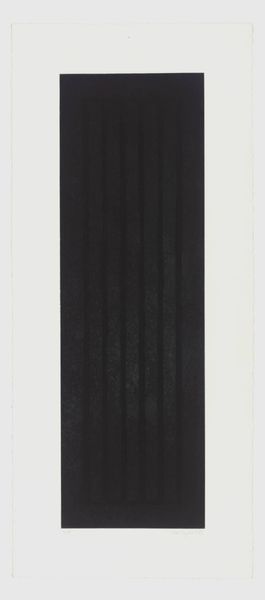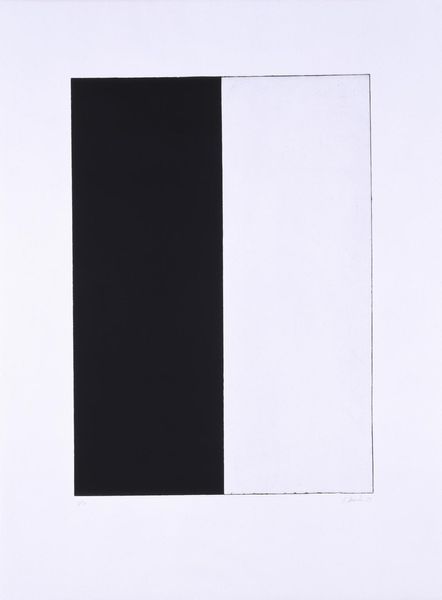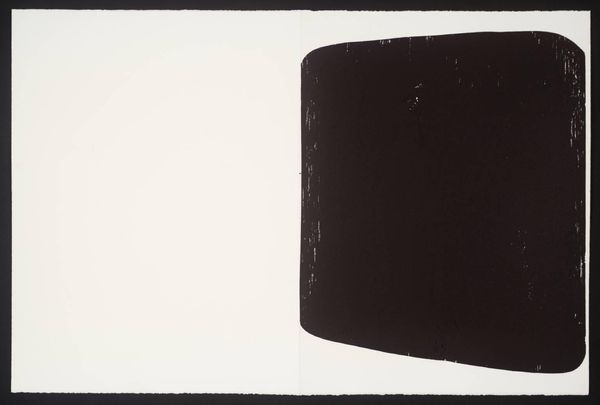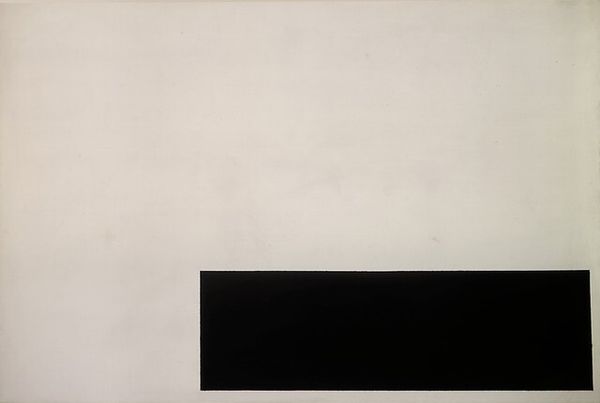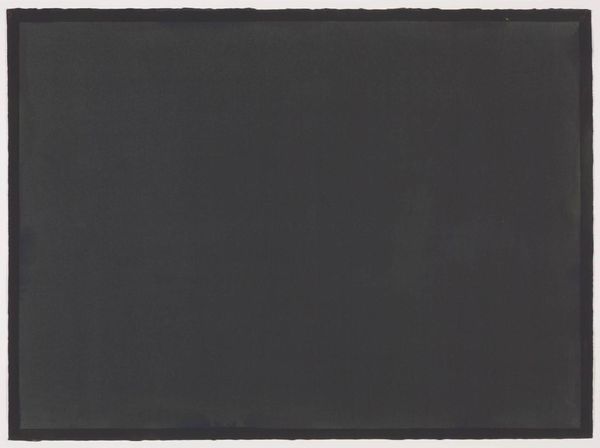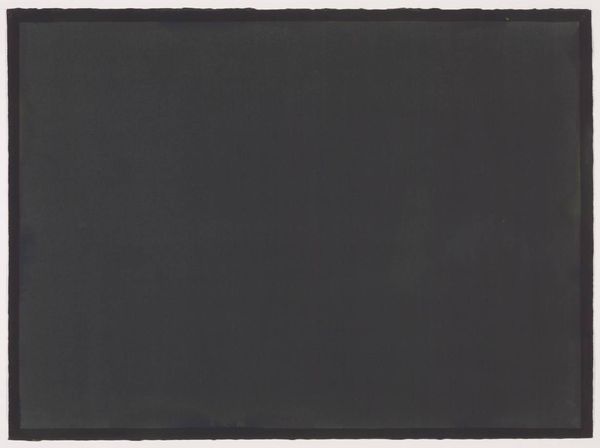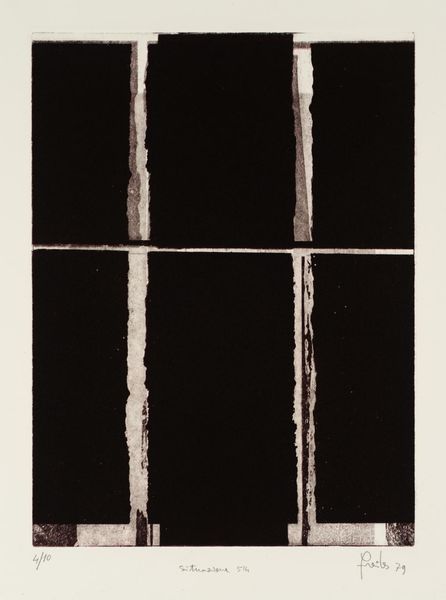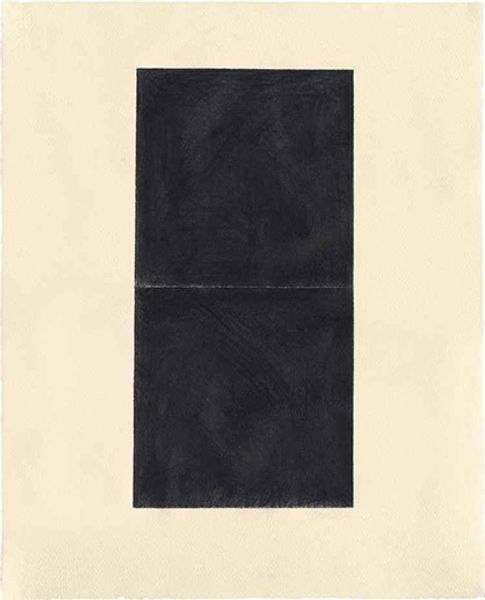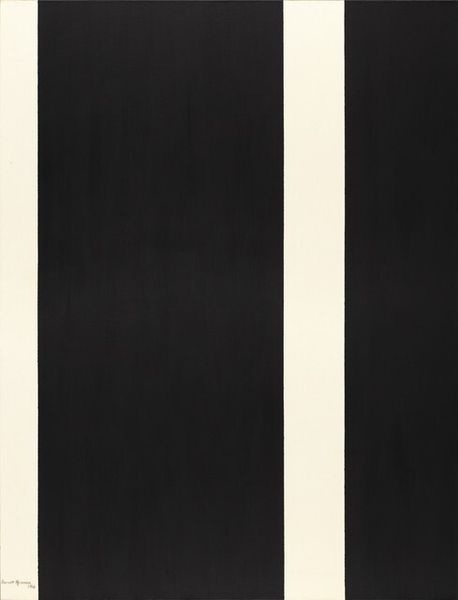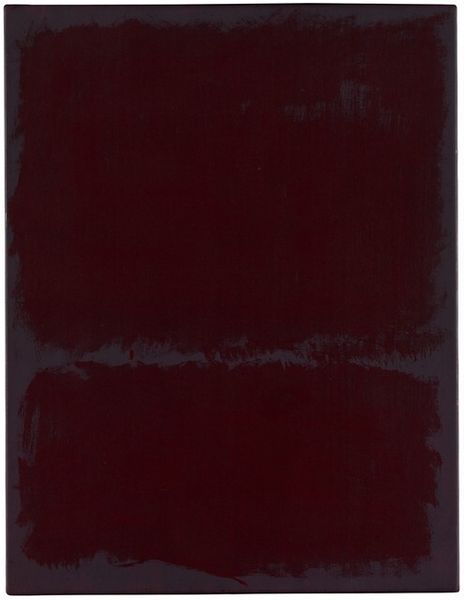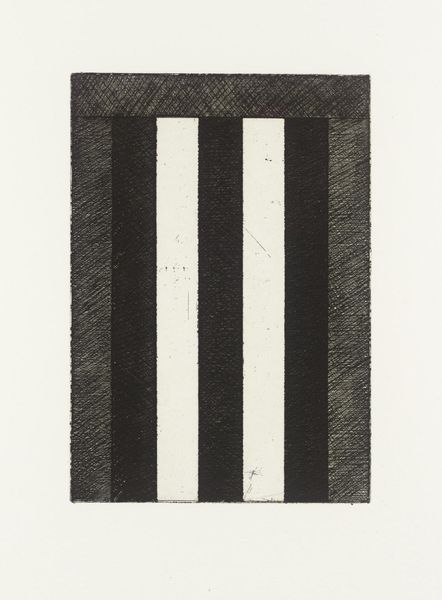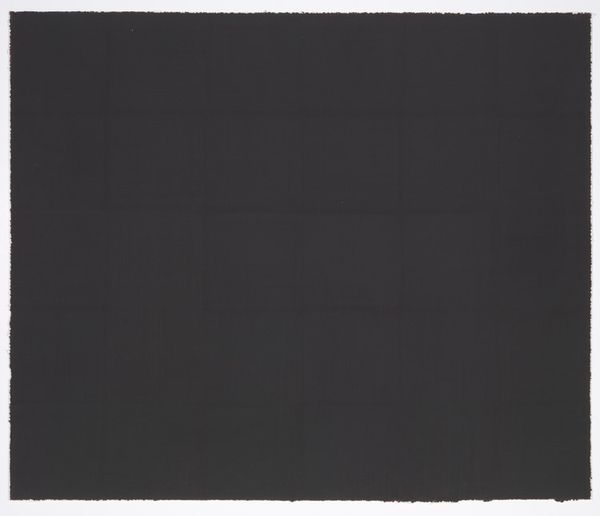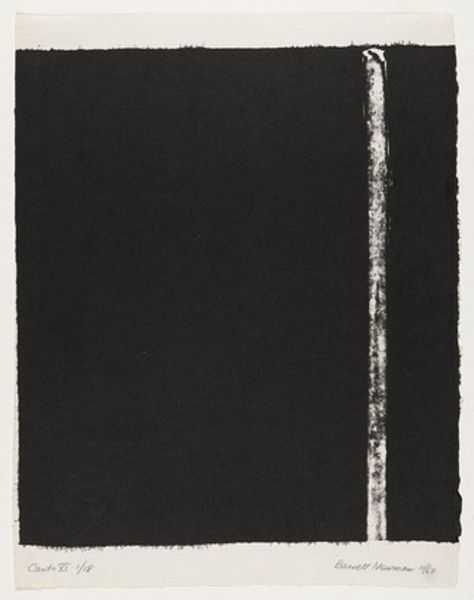
print, stencil
#
abstract-expressionism
#
minimalism
#
stencil
# print
#
stencil
#
geometric
#
abstraction
#
monochrome
Copyright: Frederick Hammersley,Fair Use
Curator: We’re looking at “Covenant,” a 1963 stencil print by Frederick Hammersley. The composition features two, nearly identical black forms, rounded at the top, set against an off-white background. Editor: Immediately, it feels very austere, almost monolithic. There's something inherently powerful in that stark simplicity and limited palette, but I wonder what the choice of black conveys. Curator: Hammersley's abstract works often played with geometry, line, and color, moving between what he termed “hunch” and "geometry" compositions. Considering the historical context of 1963, what sociopolitical meanings might emerge? Is it possible the seemingly simple aesthetic confronts concepts of law, religion, or authority? Editor: Absolutely. Think about the '60s – the Civil Rights movement, rising social tensions. The term "covenant" suggests an agreement, but perhaps one under pressure. What does a broken agreement or an unjust system feel like, visualized? The relentless monochrome feels loaded, maybe alluding to a suffocating power structure. Curator: Interesting point, because Hammersley resisted straightforward symbolism. He spoke of allowing the viewer to find their own meaning in his pieces, almost inviting projection. So while the visual vocabulary may appear cold and minimalist, perhaps the "covenant" itself is mutable, open to negotiation, reinterpretation. Editor: Yet the inherent power structures present in institutional covenants persist regardless of intent. Can minimalist forms ever really escape the historical power they emulate, or must their meaning, as you say, exist solely within our own subjectivity? Curator: Hammersley navigated that tension masterfully, understanding the limits and possibilities of abstraction as a politically neutral or inherently radical language. And the ambiguity might actually be the most radical aspect of this work. What do you take away, ultimately, from pondering "Covenant"? Editor: I’m struck by how much feeling emanates from such strict geometry. Its stark presence prompts reflection on what covenants mean – both promises made and power imbalances enshrined. Curator: Indeed. It invites us to reflect on our own assumptions, and perhaps that’s its enduring legacy.
Comments
No comments
Be the first to comment and join the conversation on the ultimate creative platform.
